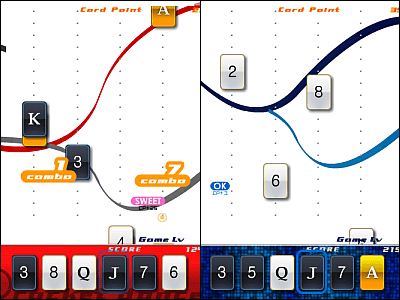Is it possible to shuffle just one card to make it 'completely mixed'?

Many people should have experienced the situation that 'no matter how many times the cards are shuffled, they don't mix neatly'.
The Math of Card Shuffling
https://fredhohman.com/card-shuffling/
There are various ways to say 'shuffle' such as overhand shuffle , refill shuffle , Hindu shuffle, etc. There have been many studies on 'which shuffle is efficient' With Rifle Shuffle, which mixes the cards while biting them together, we have found that the cards can be randomized with '7 times' trials.
A Study on Visualization and Optimal Combination of Trump Shuffle
(PDF file) https://www.ipsj.or.jp/award/9faeag0000004f1r-att/CF-011.pdf
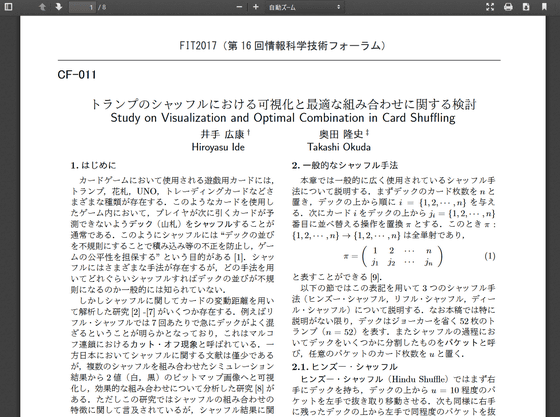
Rifle shuffle is a shuffle method that divides 52 cards into halves (26 pieces each) and inserts the other group into pieces between one group. This time, Mr. Hohmann performed a simulation of a special refill shuffle called 'dividing Trump into '1 and 51'' by simplifying the normal refill shuffle.
I will actually try this special ruffle shuffle. In the initial state, it is assumed that cards are arranged in the order of spade, club, heart, and diamond from A(1) to K(13).
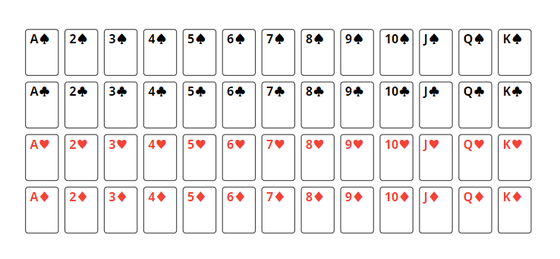
The special ruffle shuffle that Mr. Hohmann thought about is a shuffle that puts the top card somewhere in the deck. In the initial state, the spade A is at the top, so if you make one trial, the spade A will move to somewhere in the deck.
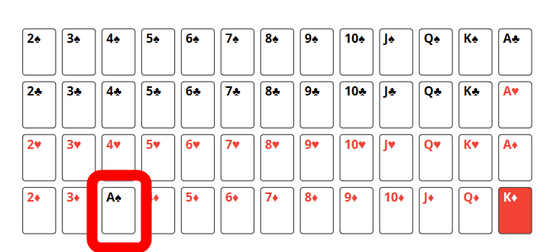
After that, repeat this to aim for 'a state where all the cards are mixed'. This time, Mr. Homann defines the state where all the cards are mixed as 'the state where the diamond K that was originally at the bottom of the deck came to the top of the deck'. If the diamond K came to the top of the deck, the entire deck was said to be well mixed.

At the start, the diamond K is the bottom of the deck. If you try to 'randomly put the top card in the deck,' there are two types of results: 'cards are in the upper layer than diamond K' and 'cards are in the lower layer than diamond K' It will be considered. When a card enters the upper layer, the K position of the diamond does not change, but when a card enters the lower layer than the K of the diamond, the K position of the diamond is one position higher in the deck. come.
If you consider randomly placing the top card in the deck, there are 52 positions where the cards are inserted, from the 'top' to the 'bottom'. If the diamond K is at the bottom, the 'card goes below diamond K' pattern is only possible when the card is inserted at the bottom, so the probability is 1/52. If the diamond K is the second from the bottom, there are two patterns of 'cards are inserted in the layer lower than diamond K', that is, the card is inserted at the bottom or directly under the diamond K, so the probability is 52 minutes. It is 2.
Similarly, if the diamond K's position is the 'i'th position from the bottom, the probability of the 'card enters below the diamond K' pattern is i at 52 minutes. Based on these, calculating the number of trials until K of diamond comes to the top is about 236 times.
Hohmann has also released a simulator that lets you try this shuffle in action. The simulator looks like this, and it has a diagram in which the decks are arranged in order from the top, and there are two buttons, 'Riffle' to make one trial and 'Riffle (x10)' to make ten consecutive trials. Click “Riffle”……

It is shuffled once, the first card moves to somewhere on the deck, and the total number of attempts is recorded.
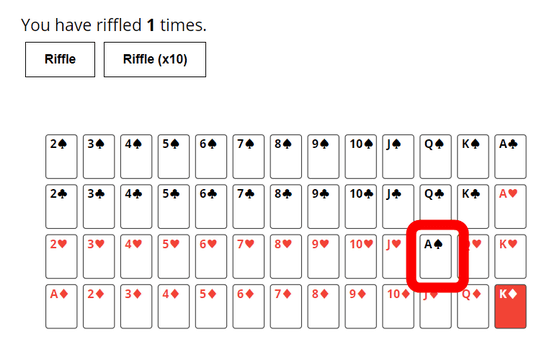
When I continued the trial, the diamond K moved from the bottom at the 18th time.
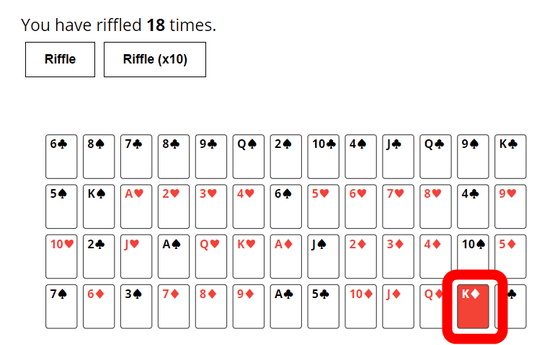
At the 139th time, K of diamond is above half of the deck.
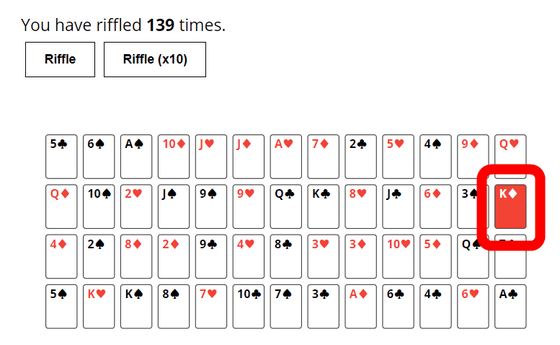
It reached the top of the deck in 176 times.
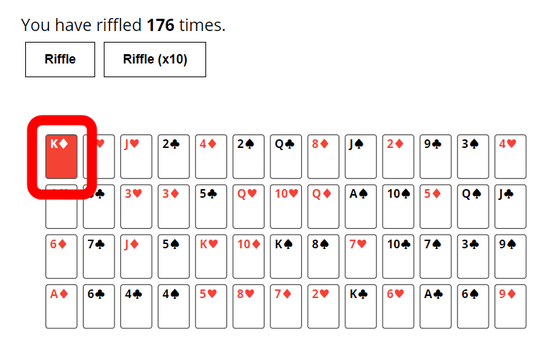
You can also check the K position of the diamond according to the number of trials in the graph.

Some mathematicians are investigating how long the primitive shuffle method of 'stirring cards on a desk' can create a perfectly mixed state.
There is a mathematician who challenges Gachinko to 'How many seconds will you mix perfectly if you stir the cards on the desk?'-GIGAZINE

Related Posts:
in Note, Posted by darkhorse_log


